Asked 25 International and 25 Japanese Students:
What is needed to promote internationalization at Doshisha University?
International Students
1. Smits Saskia Susanne
Germany Center for Japanese
Language and Culture (Nichibun
Center)
I hope the international
circle, Cosmopolitan, continues
to have activities. I am
also going to try and make
new friends from different
countries.(more)

Internationalization Promotion Questionnaire Review
Zhou Weiwei (Faculty of Commerce, 4th year, China)
We asked 25 Japanese and
25 international students
opinion on what is necessary
to promote more
internationalization at
Doshisha. I would like to
express my opinion on this
matter as one of the
international students.
I found a common response
between the Japanese and
international students. They
both wanted events that
allowed more exchanges with
one another.
International events are not
only good for practicing
languages but it also allows
people to exchange freely with
open hearts. For instance, one
may overcome the language
barrier through the mutual
understanding of music.
(more) (japanese)
Frontiers of International Exchange
Through the Japanese education in Doshisha University
Miyuki Hira (Professor, Center for Japanese Language and Culture)
I became a full-time
instructor at the Doshisha
University, Center for
Japanese Language (Bekka)
that was established in April
1999. To be honest, we jump
started without creating goals
and organize how things were
going to be carried out.
Teaching Japanese at Bekka
was the beginning of my
international exchange. We
tried to improve the Japanese
class as much as possible
with the cooperation of other
teachers by piling every
conceivable device. Then little
by little, we realized our goal
was to make the Doshisha
University International
Bekka the worldfs best
Japanese education institution.
(more) (japanese)
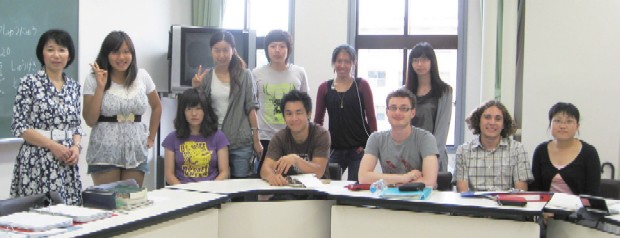
Report of AFS Activity
The Opening of the Hiroshima Peace Study Session
Representative of the Hiroshima Peace Study Session,
Rika Tanaka (Ritsumeikan University 3rd year)
Rika Tanaka (Ritsumeikan University 3rd year)
The 8th Hiroshima Peace
Study Session was held at
the Kyoto chapter this year.
The group originally started
with international students
wanting to go to Hiroshima.
They all put their ideas
together and continued to
build the group with the
desire for others to learn. I
wonder what they thought
and learned in the past two
months.
(more) (japanese)

Special Feature on Sports

Our purpose: To introduce information on sports from our home countries by sharing our personal experiences of games, classes, and sports clubs

From the Doshisha Sports
An inspirational sport in my life
YoungWoo Jang (Faculty of Economics, 4th year, Korea)
 When you think about
sports that represent South
Korea, the 2002 Soccer World
Cup semi-finals and the 2nd
place in the WBC come to
mind. Both soccer and
baseball have been taken up
largely through the media
and have become ever so
popular because of it. It has
grown to the point that
soccer is considered the
national sport and baseball
is not far behind as well.
(more)
When you think about
sports that represent South
Korea, the 2002 Soccer World
Cup semi-finals and the 2nd
place in the WBC come to
mind. Both soccer and
baseball have been taken up
largely through the media
and have become ever so
popular because of it. It has
grown to the point that
soccer is considered the
national sport and baseball
is not far behind as well.
(more)
What is a sport?
Yuna Otake (Faculty of Policy Studies, 2nd year)
I wonder what you would
reply to this question.
Generally, one would think of
a sport that involves
competition like baseball and
soccer. The definition of
sports consists of countries
and culture and it has
changed quite a bit with the
flow of history.
(more) (japanese)
Comparing the club activity between Japanese-Chinese students
Zhou Weiwei (Faculty of Commerce, 4th year, China)
People say that there are
no walls in sports but itfs
hard to say that the
structures are the same in all
countries. The biggest
difference that surprised me
the most was the club
activities in Japan.
Also known as examination
schooling, the education in
China ultimately emphasizes
on the college examination.
(more) (japanese)
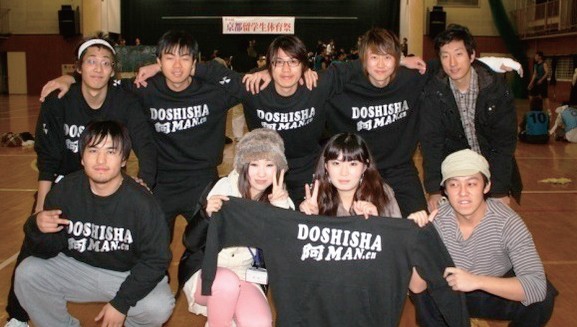
The sport in my country
Christian Pedro Calero Mateo (Faculty of Letters, 2nd year, Spain)
 My country is the south of
Europe, Spain, with a very
warm weather. I was born in
Madrid, the capital in Spain,
but not in the core of the
culture. The core of the
culture in my country is said
to be the north, where
Galicia is and so on, and the
south, where it is the famous
Andalucia region.
(more)
My country is the south of
Europe, Spain, with a very
warm weather. I was born in
Madrid, the capital in Spain,
but not in the core of the
culture. The core of the
culture in my country is said
to be the north, where
Galicia is and so on, and the
south, where it is the famous
Andalucia region.
(more)
Traditional ethnic sport: Mongol Sumo
Liu Cheng (Faculty of Economics, 2nd year, China)
I was born and raised in a
self-governed district in
Mongol, China and I
especially enjoy their national
sports. I am not a Mongolian
but since I lived there for
many years, a lot of their
racial customs became a part
of me. Similar to the national
sport of Japan, sumo, there
is Mongolian sumo.
(more) (japanese)

Tennis and me
Saori Tominaga (Faculty of Policy Studies, 2nd year)
Do you know about
Wimbledon?
Itfs the worldfs biggest
tennis match that only allows
chosen players to participate.
Tennis players from all
around the world admire and
dream about Wimbledon. It
is one of the four Grand
Slam tournaments along with
the French Open, the
Australian Open, and the US
Open. Japanfs representative
tennis player, Kimiko Date,
was able to make a
comeback not too long ago.
(more) (japanese)
Sports Review
Taiki Hanawa (Faculty of Economics, 4th year)
A few days ago in the
World Championships of
Track, Usain Bolt made a
new world record in the 100
and 200 meters competition. I
think everyone was moved
when they saw him run better
than expected and beat rivals
while bearing the extreme
pressure of everyone from
around the world watching.
(more) (japanese)
My Hometownfs International Exchange-Kumamoto Version
Saori Tominaga (Faculty of Policy Studies, 2nd year)
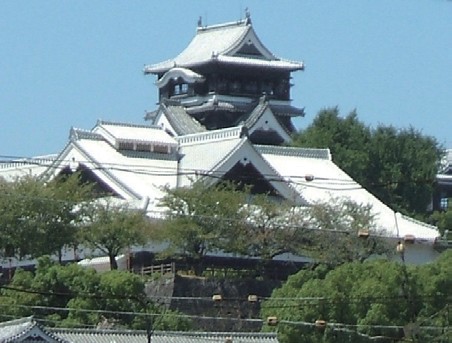
I would like to introduce
the international exchanges at
my hometown, Kumamoto.
First of all, many of you
probably know that
Kumamoto and Doshisha
University are closely related.
The exchange began by
having students and
graduates of gKumamoto
Yogakkoh (the former
Kumamoto International
School), which shut down
when Doshisha University
was established, enter
Doshisha University
unexpectedly.
They were called the gKumamoto Bandh and the famous Soho Tokutomi was also part of it.
(more) (japanese)
The Aoyama Gakuin University English Newspaper Stafffs Visit
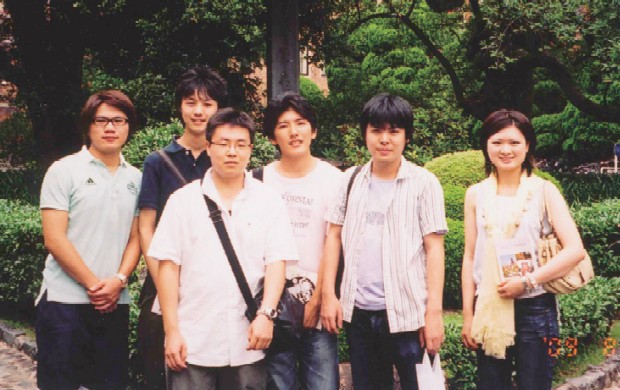
On August 6th, four English
Newspaper Staff from
Aoyama Gakuin University
visited. After the campus
tour, they met up with the
Doshisha English Newspaper
Staff and chatted over lunch
and later took a stroll in the
city. Seven English
Newspaper Staff members
from Doshisha participated
for dinner and were able to
have a peaceful exchange
throughout the night; itfs as
if it wasnft the first
encounter.
(more) (japanese)
Visit to Aoyama Gakuin
YoungWoo Jang (Faculty of Economics, 4th year, Korea)

On August 27, 2009, Miss
Han and I visited the English
Newspaper Club of Aoyama
Gakuin University. On
August 6th, Aoyama Gakuin
visited Doshisha University to
discuss the previous visit
they had at the university.
First of all, I would like to
thank the members of the
English newspaper club of
Aoyama Gakuin that
welcomed me during the
visit. I enjoyed lunch, visited
the English newspaper
clubroom, and went on the
Tokyo Tours (Omotesando,
Yasukuni temple).
(more) (japanese)
Visit to Waseda
Taiki Hanawa (Faculty of Economics, 4th year)
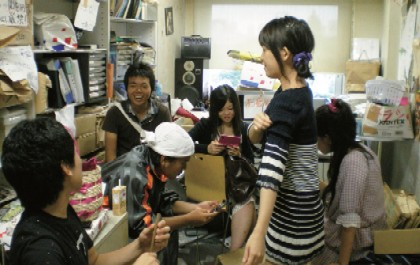
On September 15th, I visited
the English Newspaper Club
of Waseda University also
known as the Waseda
Guardian. I met up with the
editor in chief, Ayuko Kiyoshi
and with one of the members
of the editorial department,
Kyosuke Higuchi in the
afternoon. After we ate curry
near the campus and
exchanged ideas, they guided
me to one of the rooms in
the student assembly hall.
Next, I would like to point
out two things I felt after I
exchanged with the two
members of the Waseda
Guardian.
(more) (japanese)